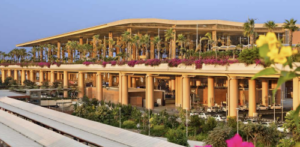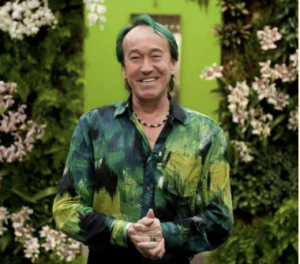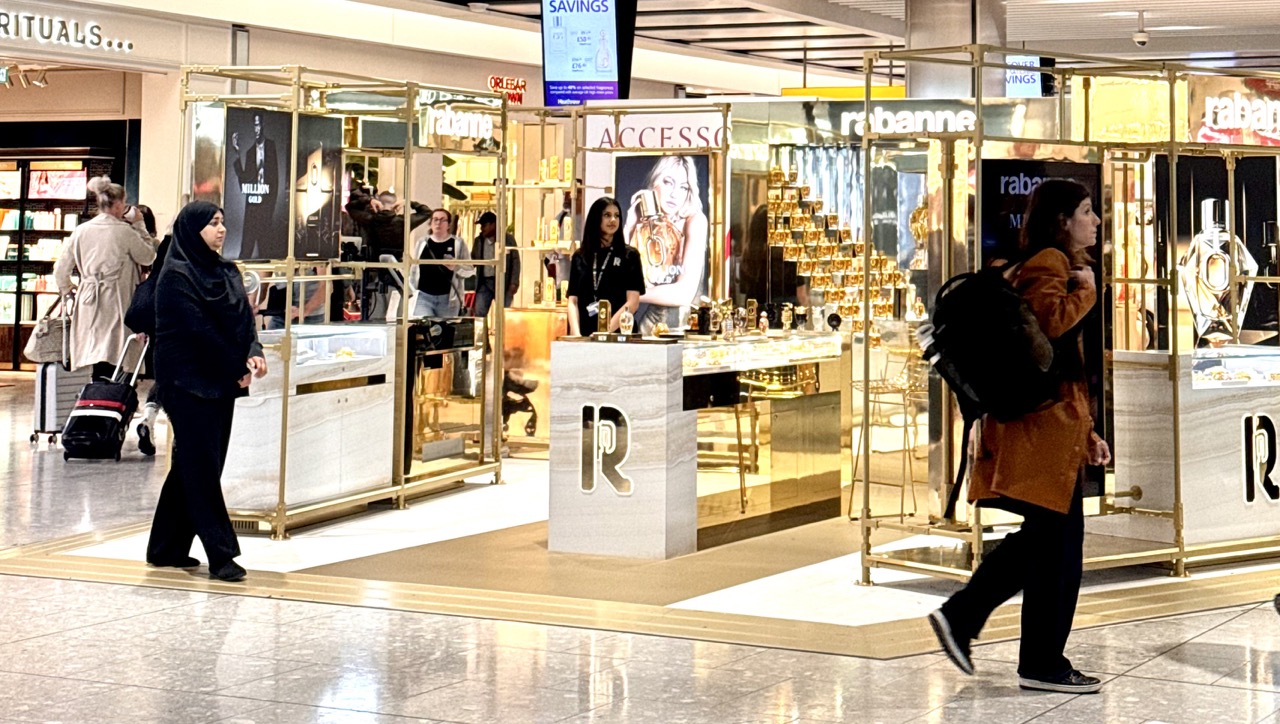Our regular feature, brought to you in association with Duty Free Global from Ireland, celebrates memorable scenes, moments, launches and campaigns related to the global aviation and travel retail sphere.
INDIA. Our extraordinary images today come from an equally extraordinary gateway – Kempegowda International Airport Bengaluru (Bangalore/BLR Airport) – where a pioneering vertical garden called Tiger Wings has just been unveiled.
The installation has been designed in collaboration with Patrick Blanc, a globally renowned botanist affiliated with the French National Centre for Scientific Research.
Located in Terminal 2, this 30ft-high, 160ft-wide (two walls each of 80ft) attraction represents Blanc’s largest project in India and exemplifies T2’s foundational philosophy of seamlessly blending nature with infrastructure.
Tiger Wings is home to over 15,000 plants across 153 species, many native to Karnataka and the Western Ghats.
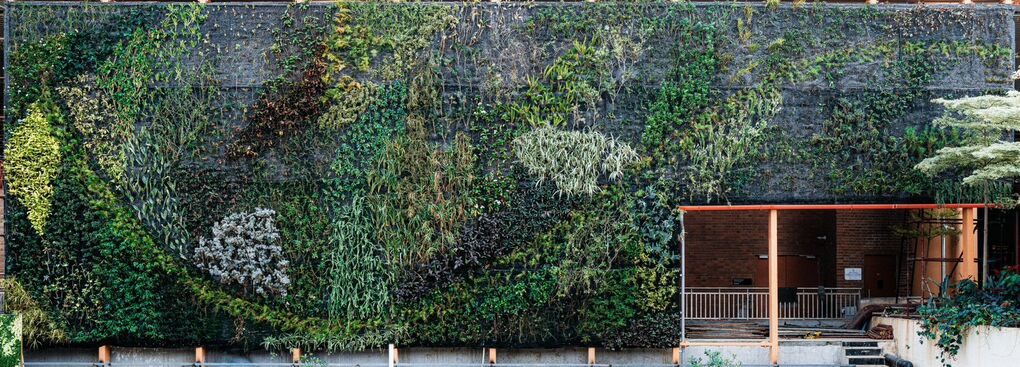
To ensure the wall features species native to the region, Blanc visited several forests in the Western Ghats (a chain of mountains running parallel to India’s western coast, approximately 30-50km inland. These mountains cover an area of around 140,000sq km in a 1,600km-long stretch.)

Using a soilless system with specialised felt imported from Germany, the garden’s intricate design captures the strength and elegance of India’s national animal, the tiger. Asparagus plants trace the silhouette of aeroplane wings, while vibrant red, orange, yellow and white Ixora flowers represent the tiger’s signature pattern.
Bangalore International Airport Ltd (BIAL), Managing Director & CEO Hari Marar commented: “We wanted to bring in a fresh perspective to our vision of sustainability, artistry, and technological advancement in a way that resonates with Bengaluru’s essence.
“Patrick’s innovative approach to designing living walls – allowing plants to grow as they would in nature with minimal intervention – was precisely what we envisioned for this space.
“Terminal 2 was anchored by four guiding principles – Terminal in a Garden, technology, art, and sustainability – and this wall embodies all of them.
“Moreover, the installation reflects our vision to harmonise nature with infrastructure, showcasing the true spirit of Bengaluru.”
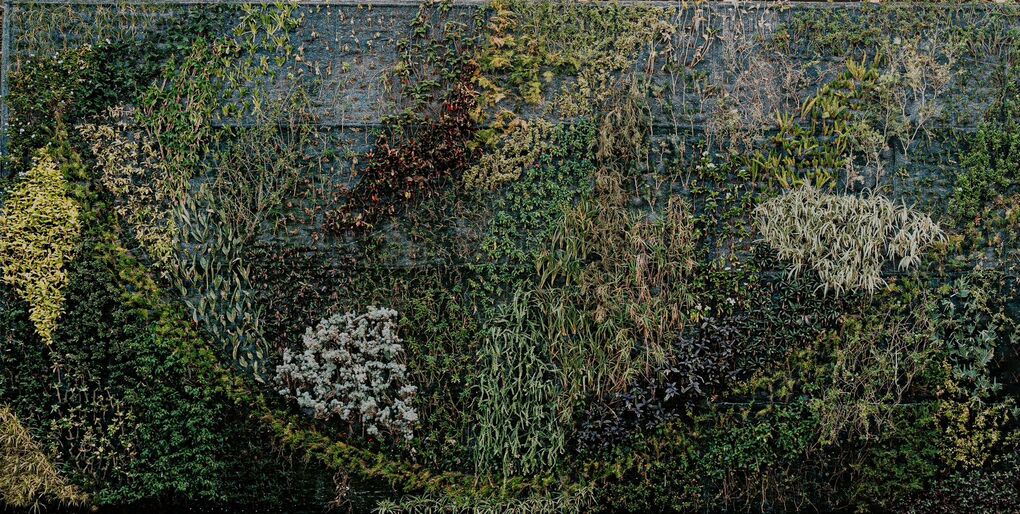
Patrick Blanc added: “Tiger Wings is the realisation of a dream where nature and architecture coexist seamlessly. By employing specialised felt layers, we create an environment where plants thrive, just as they would in nature’s crevices {main story continues following the sidebar below}.
Terminal in a GardenBLR Airport’s Terminal 2 is more than just an architectural masterpiece – it stands as a reflection of sustainable design.
Known as the ‘Terminal in a Garden’, T2 features an extensive network of green spaces, including over 10,000sq m of vertical gardens that envelop the terminal. These green spaces are designed to support biodiversity and enhance the ecological balance. One of the key features of the airport is its biodiversity, with about 1,200+ plant species, 600-800-year-old trees, and over 180 rare, endangered and threatened species of Indian origi. These all form elements of the terminal’s ecosystem, encompassing cascading gardens on the terminal’s roof, suspended bells and serene lagoons that greet travellers.
By integrating these natural elements into its infrastructure, BLR Airport seeks to create a serene, eco-friendly atmosphere that reflects its vision for a greener future. This harmonious blend of nature and design not only enhances the travel experience for passengers but also serves as a testament to the airport’s dedication to environmental stewardship and innovation, BIAL observes. |
“This project transcends merely enhancing the visual landscape of the airport; it transforms the travel experience, rejuvenates the environment and preserves the rich tapestry of the natural world that surrounds us.”
The vertical garden is highly water-efficient, using a carefully designed irrigation system that delivers just the right amount of water to the plants through the felt layers.
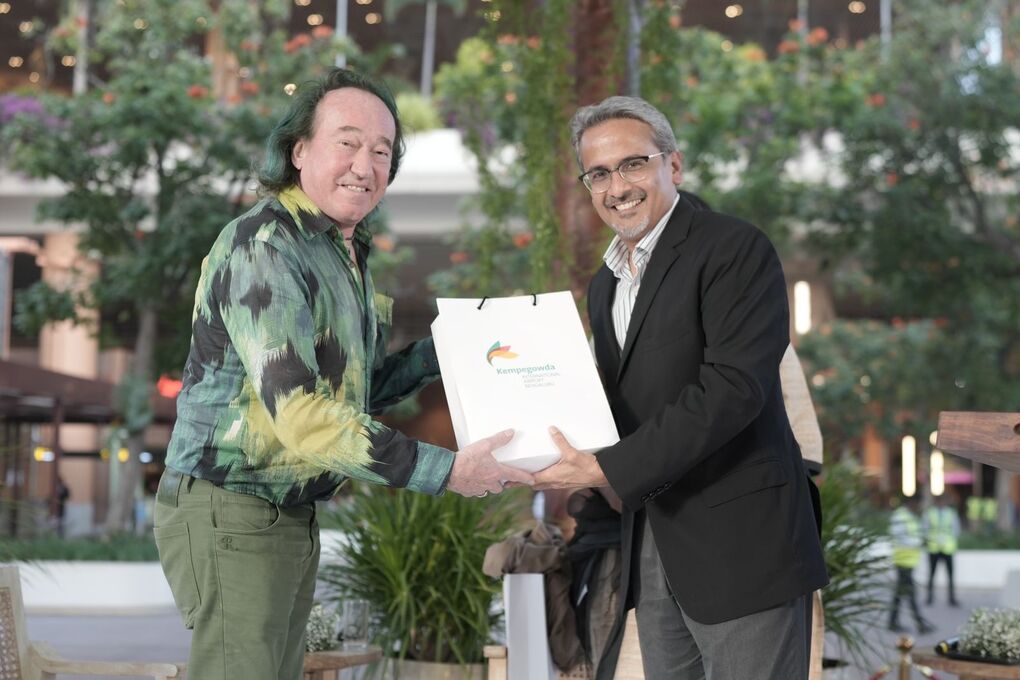
This method is more sustainable and replicates how plants grow on natural cliff faces or rock walls, where water and nutrients are minimal, but plants thrive in crevices.
Blanc’s hydroponic approach allows for a diverse array of plant species to coexist in a compact vertical space, creating a thriving ecosystem that enhances air quality and contributes to a cooler, more pleasant environment.
BIAL said: “This botanical masterpiece not only celebrates India’s wildlife heritage but also embodies BLR Airport’s vision for a modern, eco-friendly space, bringing the richness of Karnataka’s biodiversity to the heart of Bengaluru’s premier travel hub.” ✈
About Patrick Blanc
Patrick Blanc, a globally recognised botanist from the French National Centre for Scientific Research, is celebrated for inventing the concept of vertical gardens.
His pioneering work has redefined urban spaces around the world by introducing lush greenery into city landscapes, transforming concrete structures into vibrant, living ecosystems. Blanc’s expertise in plant biology, particularly his understanding of how plants grow in natural vertical environments such as cliffs and waterfalls, led him to create his revolutionary vertical garden technology.
Blanc’s work can be found in major cities around the globe, with installations in renowned locations such as the Musée du Quai Branly in Paris, the CaixaForum in Madrid and Singapore Changi Airport.
His vision extends beyond aesthetics, as his gardens improve air quality, support biodiversity and promote environmental sustainability – ideals that resonate deeply with the ethos of BLR Airport’s green transformation.




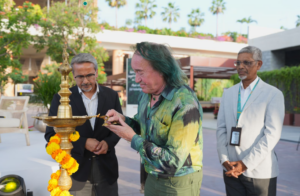
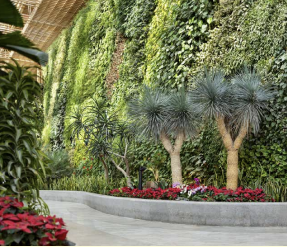 Engineered for both structural efficiency and economic viability, T2 is the largest terminal in the world to be pre-certified with a Platinum LEED rating by USGBC (US Green Building Council).
Engineered for both structural efficiency and economic viability, T2 is the largest terminal in the world to be pre-certified with a Platinum LEED rating by USGBC (US Green Building Council). 